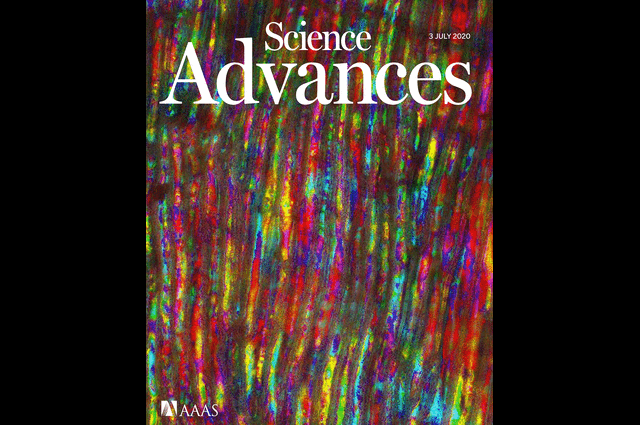Examining Lunaria annua

A team of researchers from the Silk Lab at Tufts University and the Department of Civil and Environmental Engineering at Massachusetts Institute of Technology (MIT) have examined the multiscale assembly of reflective cellulose sheets in the Lunaria annua fruit. The study, published as the cover story in the most recent edition of Science Advances, describes the freestanding, iridescent cellulose sheets of the Lunaria annua’s septum and how multiple layers of these cellulose sheets assemble to create a robust, lightweight, and spectrally responsive structure. The mechanical and optical properties of this structure serve as an inspiring template for the creation of high-performance devices and interfaces based on natural occurring materials.
The Lunaria annua is a fruit-producing plant with a flat, freestanding, highly reflective, silvery-white septum. It is composed of a bilayer arrangement of cells similar to hollow-core fibers with a thin film of cellulose cladding. Variability in the thickness of the cellulose cladding creates a wide spectrum of reflected colors. However, due to the close proximity of the individual colors in the cell wall, the different colors merge to produce a reflective, silvery-white appearance. The highly reflective appearance is thought to make the septum optically selective. To better understand the spectral response of each cell related to cellulose thickness, the researchers used bright-field multispectral microscopy to compose a composite map of the varying coloration.
In addition to being visually selective, the septum consists of a membrane that is simultaneously strong and flexible. This structural versatility is due to the arrangement of nanofibril materials organized in arrays within hollow elongated cells. The arrays were found to be situated in parallel, perpendicular, or angular relation to one another. The perpendicular and angular arrays account for the strength of the septum, while the parallel arrays promote flexibility without cracking the cellulose cladding.
The thin cellulose cladding combined with the bilayer, hollow-core arrangement of cells results in a lightweight membrane that is highly flexible and strong. Coupled with the diverse coloration and the reflectivity cause by variability in the cellulose cladding, the septum of Lunaria annua manages to be both mechanically and visually robust. The research team believes that this coexistence of structural versatility and physical function could serve as an inspiration for bio-inspired devices with distinctive multifunctional and hierarchical properties.
Read more in Science Advances: Photonic paper: Multiscale assembly of reflective cellulose sheets in Lunaria annua.
Department:
Biomedical Engineering